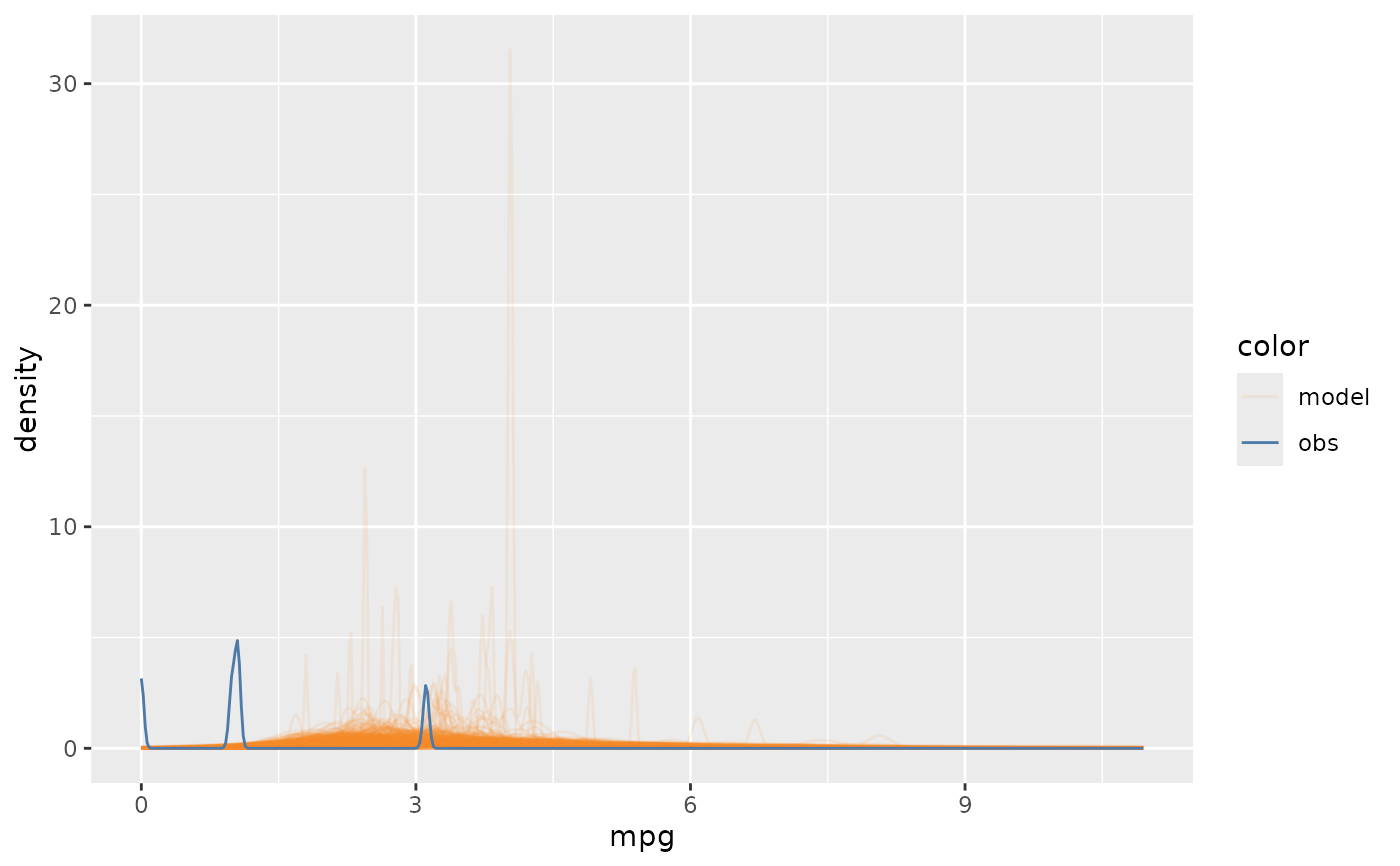Define the transformation applied to observed data
mc_observation_transformation.Rdmc_observation_transformation() defines the necessary transformation applied
to the observed data before passing it to generate model check.
mc_observation_transformation(transform = NULL, group = NULL)Arguments
- transform
The transform function that is applied on the response variable in observed data. Default to be
NULL. IfNULL,vmcwill use no transformation. The transform function takes an input of a data frame, e.g., the data frame passed toobservation, containing a column namedobservationstanding for observations of the response variable and several columns standing for the predictors in model (if any). The output of the transform function should be in the same form as the input, a data frame containing a column named observation and several columns for the predictors. This argument is useful whenmc_drawis set to a distribution that is in a different unit from the raw observation, e.g.,sigmain Gaussian family models describes the variance of observation. See example for more details.- group
A set of variables quoted by
ggplot2::vars()and represents the group option used before applying thetransformfunction.
Details
The transformation is necessary when the distribution generated by the model
is not predictive distributions. For example, when the distribution generated
from phi parameter of beta distribution, the observed data can not be shown
in model check directly but need to be transformed into the same scale of
phi.
Examples
library(ggplot2)
mcplot(mpg_model) +
mc_draw("sigma") +
mc_observation_transformation(sd, vars(disp)) +
mc_gglayer(coord_flip())
#> Warning: Removed 23 rows containing non-finite outside the scale range
#> (`stat_density()`).
#> Warning: No shared levels found between `names(values)` of the manual scale and the
#> data's fill values.
